Thirty-one years after Gish, the Smashing Pumpkins are still exploring the architecture of sound in their often explosive and unpredictable songs. For their current Spirits on Fire Tour, Billy Corgan leads with his Reverend signatures and a few other carefully culled guitars, and Jeff Schroeder lends support with his fleet of Yamahas.
The Smashing PumpkinsSmashing Pumpkins' first two albums, Gish and Siamese Dream, were a huge part of the soundtrack for the early ’90s alternative rock revolution. Still sounding revolutionary all these years later, the band’s leader, Billy Corgan, recently brought the Smashing Pumpkins to Nashville’s Bridgestone Arena for the Spirits on Fire tour, on the heels of their 11th studio album, Atum: A Rock Opera in Three Acts.
The concept album is a sequel to the Smashing Pumpkins’ definitive three-LP masterwork Mellon Collie and the Infinite Sadness, from 1995—which also brought them crushing into the mainstream. Acts two and three of Atum are scheduled for January and April 2023. But meanwhile, there are live shows … and all the gear it takes to recreate more than three decades years of the band’s signature sounds. PS: Special thanks to super-tech Trace Davis for his help with the fine points.
Brought to you by D’Addario XPND Pedalboard.
Sticker Shocker
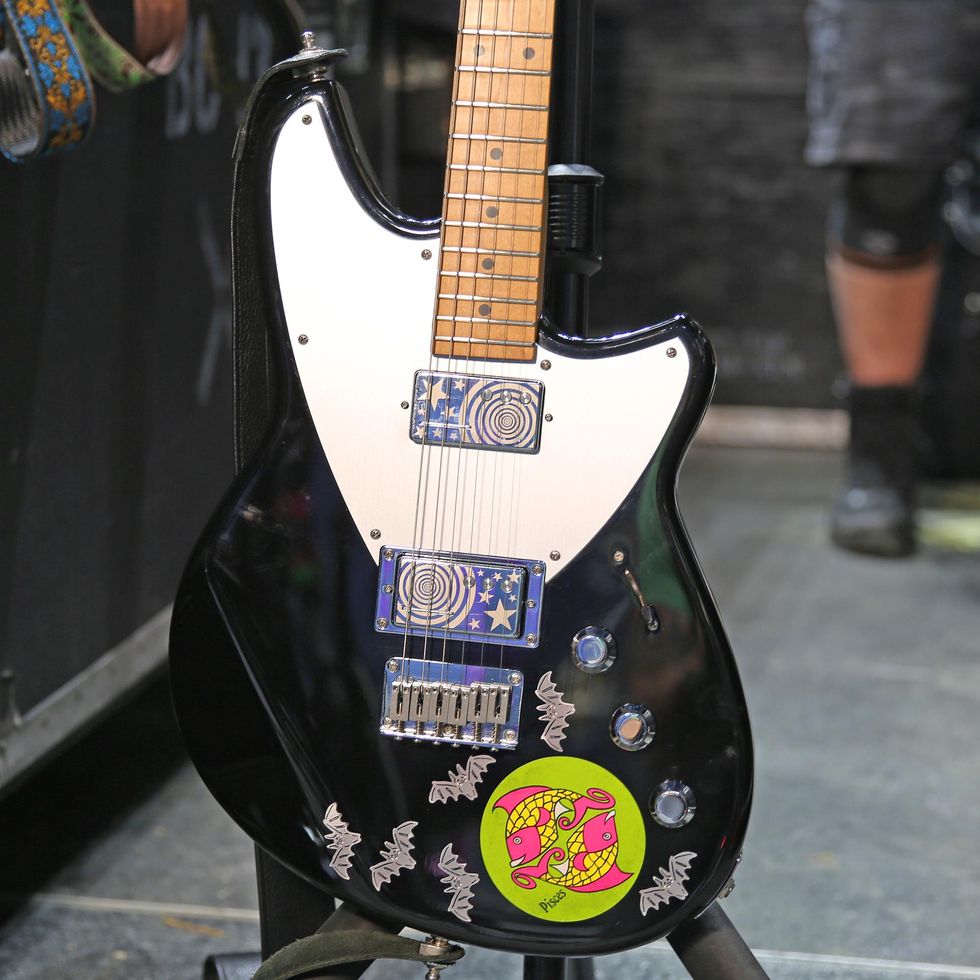
Billy Corgan’s main guitar, tuned in standard, is his Reverend signature Z-One in midnight black, loaded with Railhammer Billy Corgan Z-One neck and bridge pickups. This model is the third collaboration between Corgan and Reverend’s Joe Naylor, and Mr. C’s axe takes Ernie Ball Regular Slinkys, gauged .010–.046.
Purple Haze
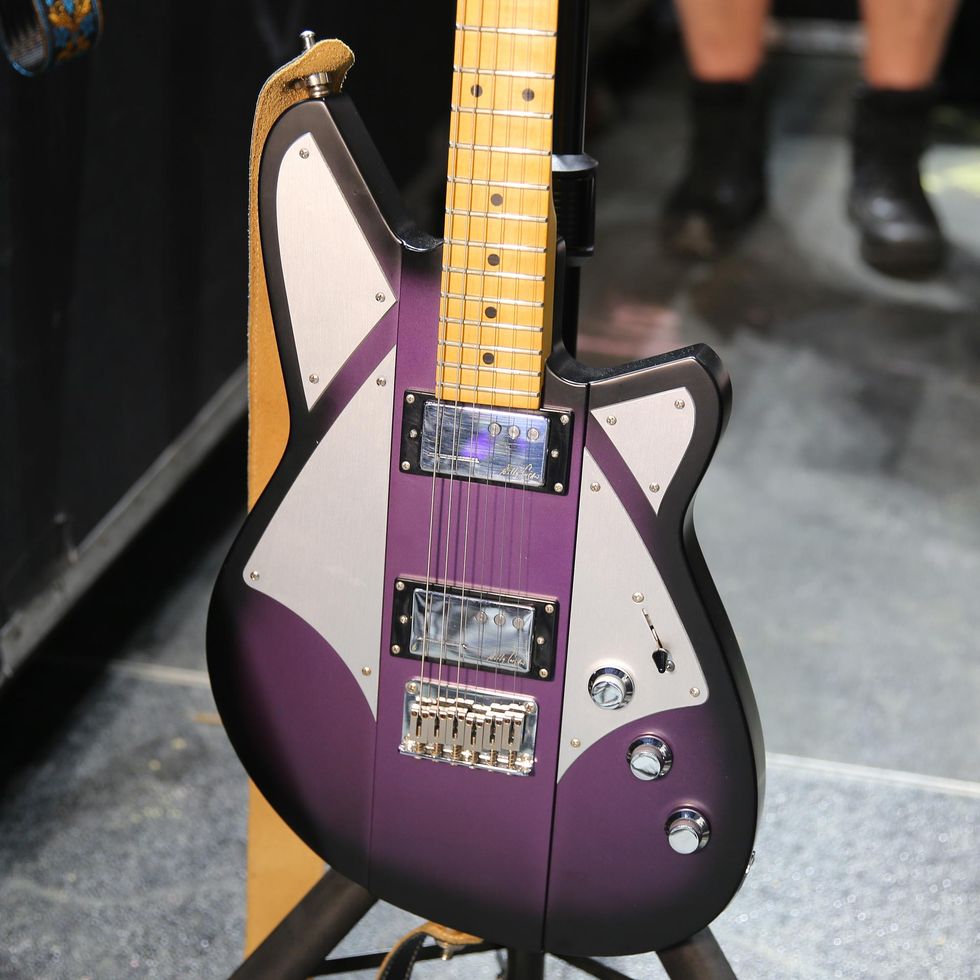
For a back-up, Billy has his Reverend BC1 signature in satin purpleburst, loaded—again—with Z-One neck and bridge pickups, which blend the bite of P-90s with humbucker heaviness.
Those Pickup Covers!
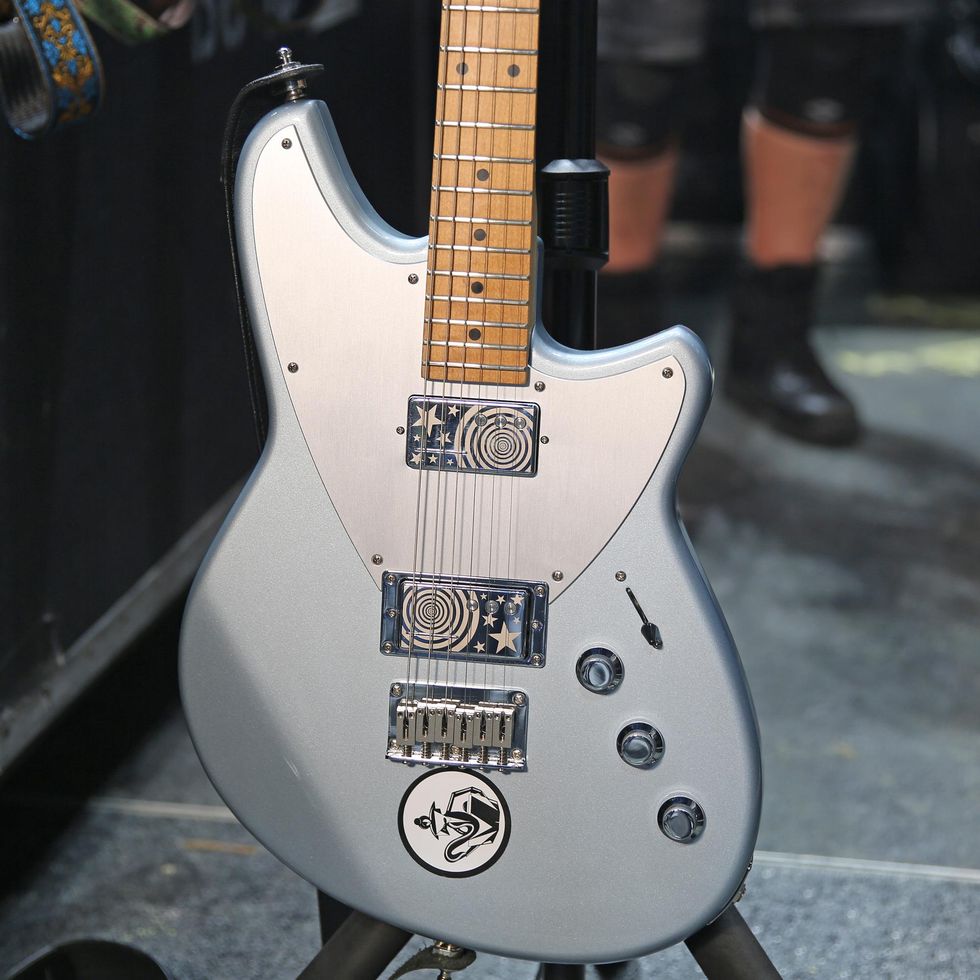
Stare long enough at those pickup covers, and perhaps you’ll see the universe, putting a new spin on the old Zen koan. When Corgan wants things just a bit looser, in Eb standard tuning, he’ll reach for this Z-One sig in silver freeze. Oh! The strings? Ernie Ball Power Slinkys, .011–.048.
Truly Special
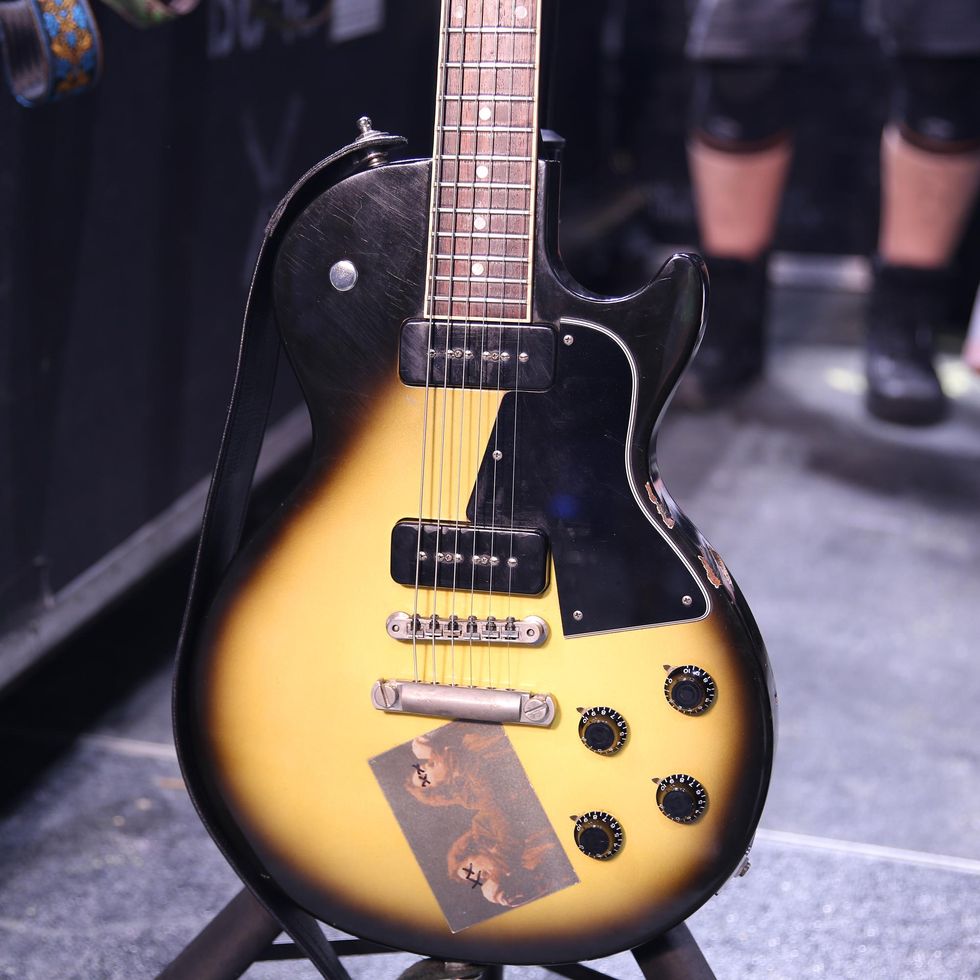
For a classic P-90 voice, Corgan lets the strings on this 1994 Gibson Les Paul Special sing. He keeps it tuned to C# standard and the switch has been modified (it's a secret), as has the sticker. Ernie Ball Not Even Slinkys (.012–.056) adorn this axe.
ES for Eb Standard
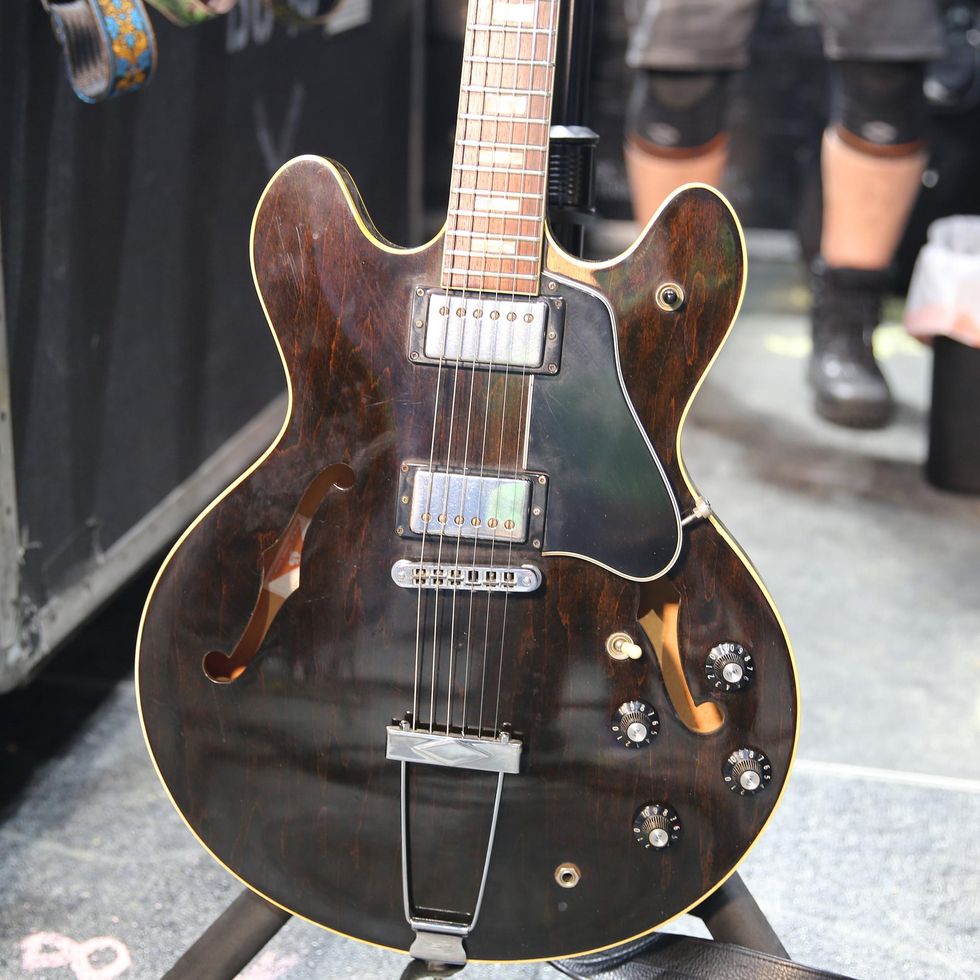
Another low-tuned Gibson, Corgan’s 1972 ES-335 with block inlays and a trapeze tailpiece, lives in Eb standard land and gets called out to play on the song “1979.”
The Silver Surfboard
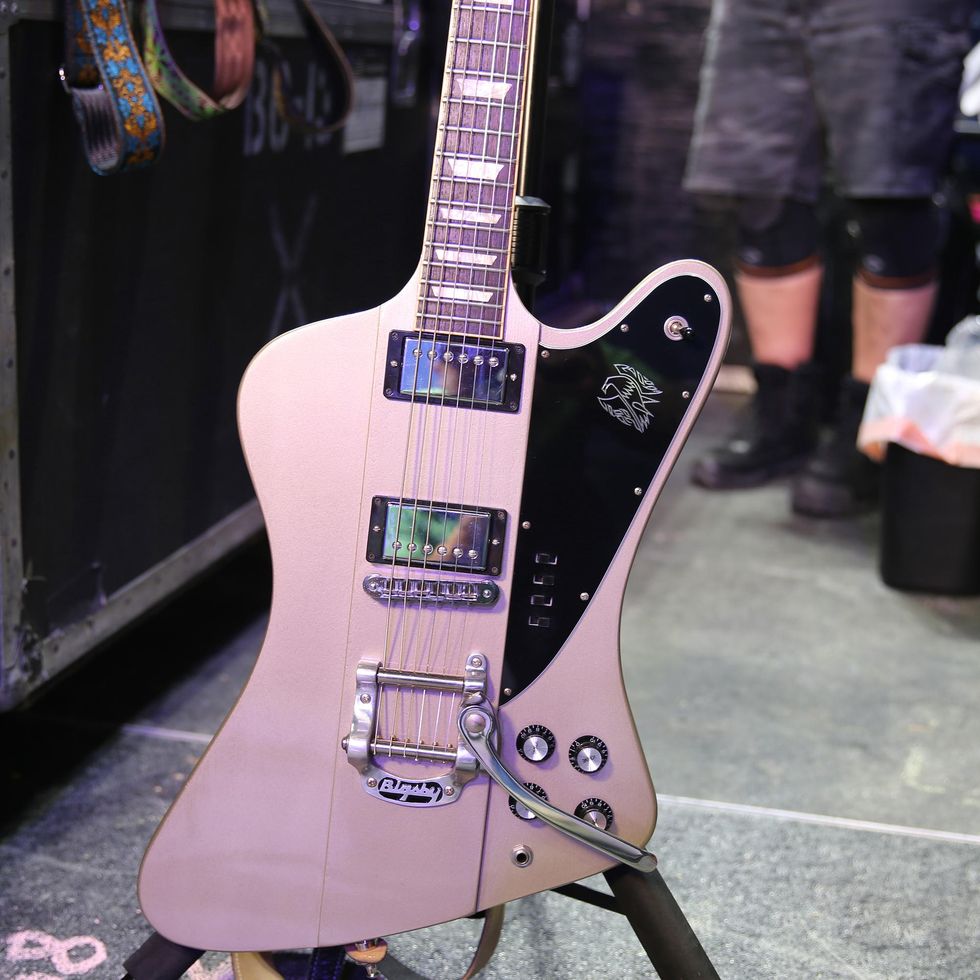
For some mini-hum sting, Billy plays this Gibson Firebird with a Bigsby in silver finish. There are several switches in the headstock, which Corgan’s tech Davis says control the “secret sauce and voodoo magic.”
Star Baby
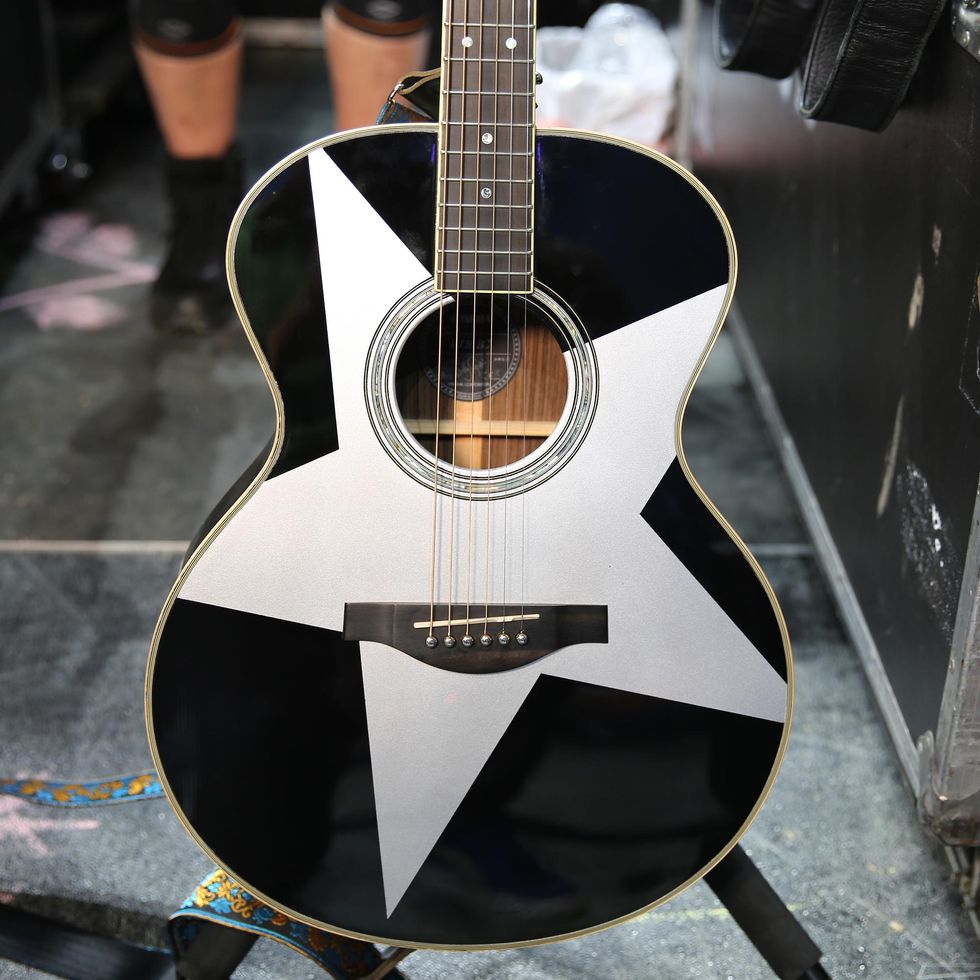
Corgan tours with two of his signature Yamaha LJ16BC acoustics—one in E and one in Eb standard. They’re medium-jumbos and all-stock, which means a spruce top, rosewood back and sides, a 5-ply mahogany and rosewood neck, and the company’s comfort traditional neck style.
Double Vision
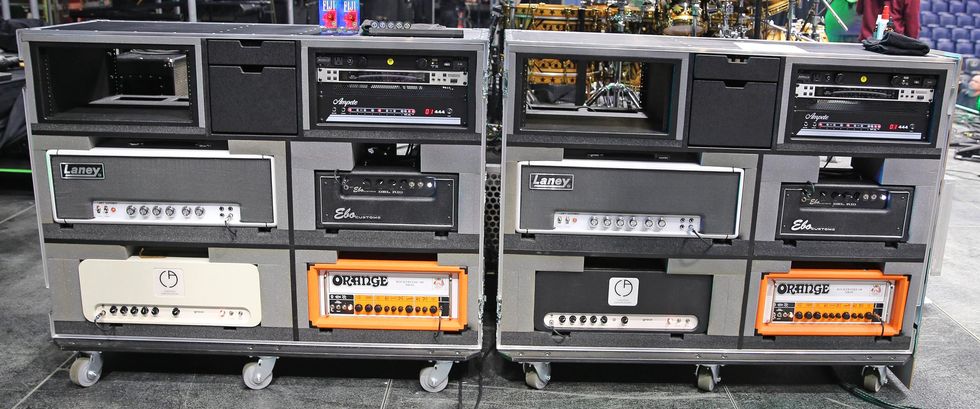
Corgan tours with two identical amp rigs, with four different heads used separately for different tones, and all switched with an Ampete 444. This allows him to drive all four heads into one Laney Black Country Customs LA412 4x12 speaker cab loaded with Celestion G12H-75s. It lives in an iso box under the stage. The amps? There’s a Laney Supermod, an Orange Rockerverb 100 MKIII, a Carstens Grace, and an Ebo Customs Del Rio.
Billy Corgan’s Pedalboard
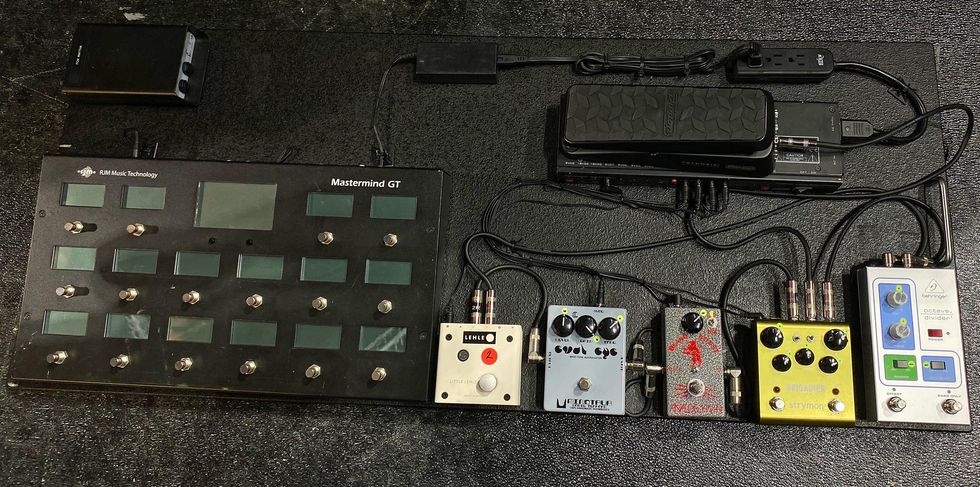
Here’s what underfoot: an RJM Mastermind GT/16 MIDI controller, an MXR CAE Power System, Analog Man Beano Boost treble booster with Mullard-style transistors, a Lehle III switching and looping tool, a Tone Bender-inspired Minotaur Sonic Terrors Evil Eye MkIII fuzz, a Strymon Brigadier delay, a Behringer Octave Divider, and a Dunlop Volume (X), used as an expression pedal for the Strymon.
Yamaha, Aha!
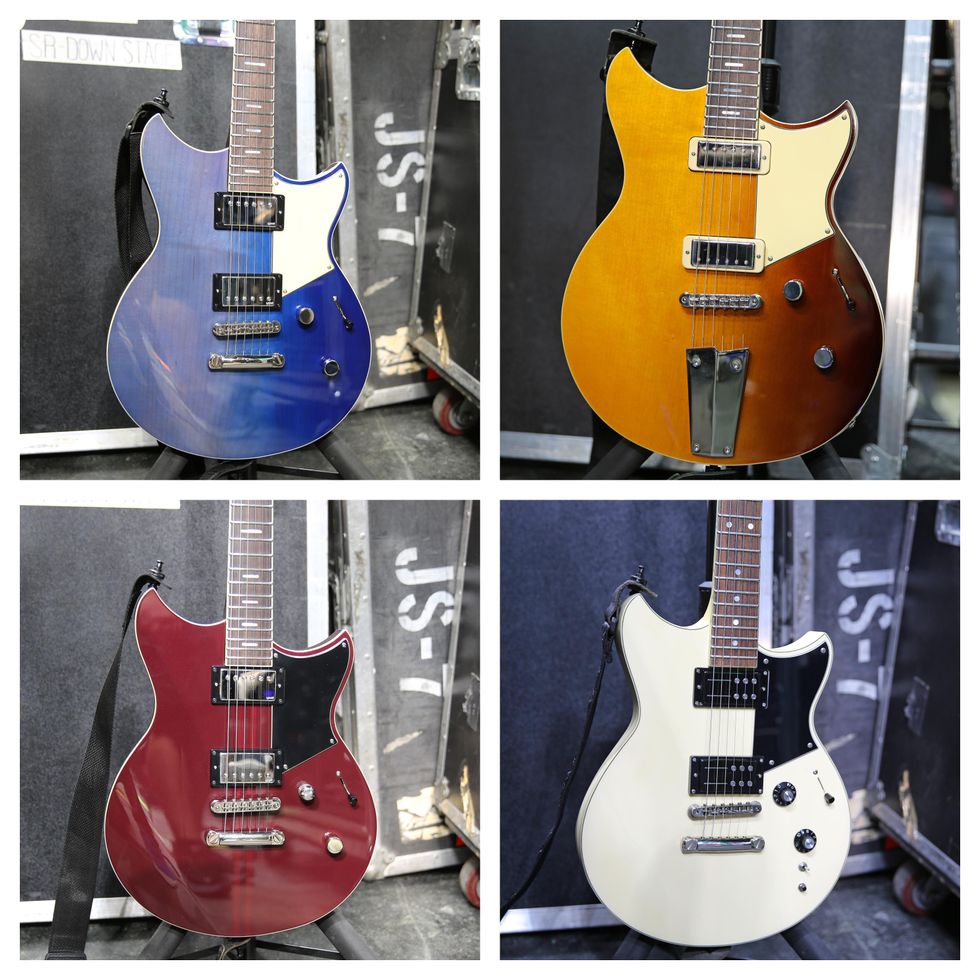
Jeff Schroeder plays Yamaha guitars. And he’s got four Revstars on tour. This one has an especially elegant finish. They came stocked with P-90s, but now one has Black Cat Vintage Repro Minis, another features Lollar Low Wind Imperial Humbuckers, and the one he keeps in drop D is totally stock. Schroeder goes with Ernie Ball Paradigm .009 sets for standard, .010s for Eb standard, .009s with a heavier .046 on the bottom for drop D, and .011s for C# standard.
Cutaway to the Pacifica
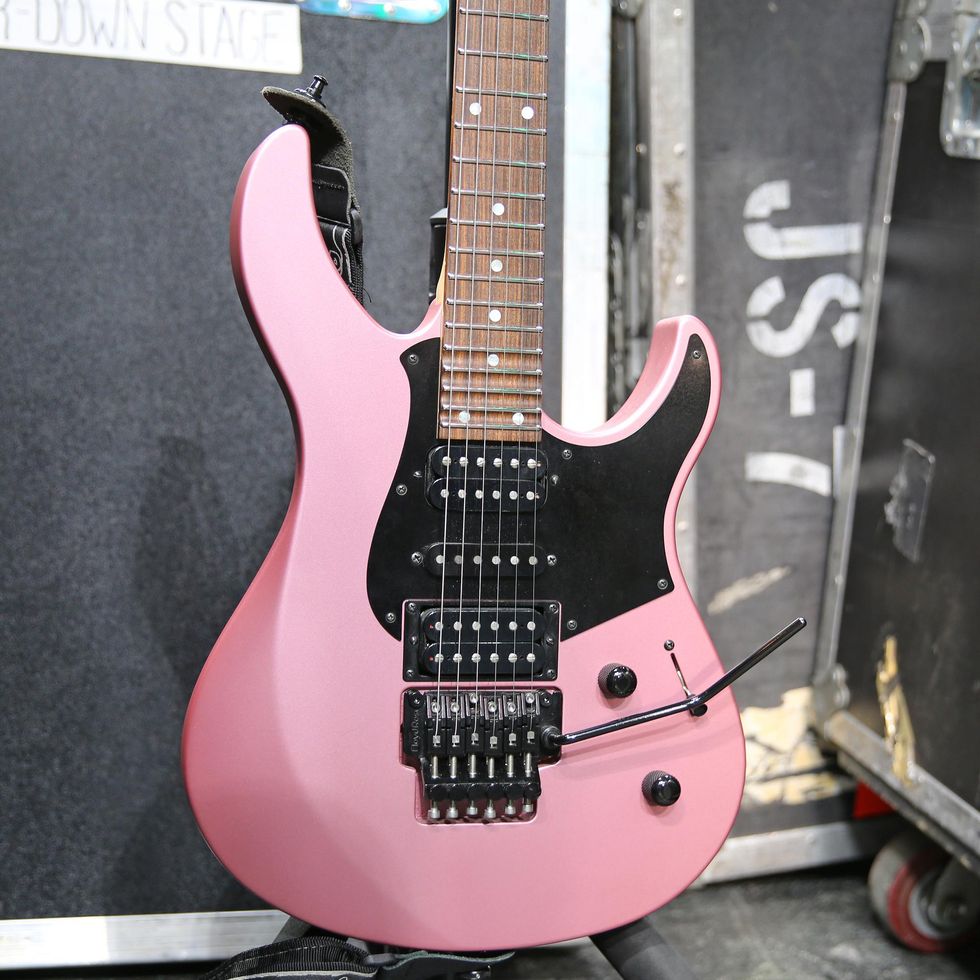
This Yamaha Pacifica has a scalloped fretboard and Seymour Duncan Hunter humbucking pickups in the bridge and neck, and an SSL-5 single-coil in the middle. It also features a Floyd Rose whammy upgraded with titanium parts.
Big Red
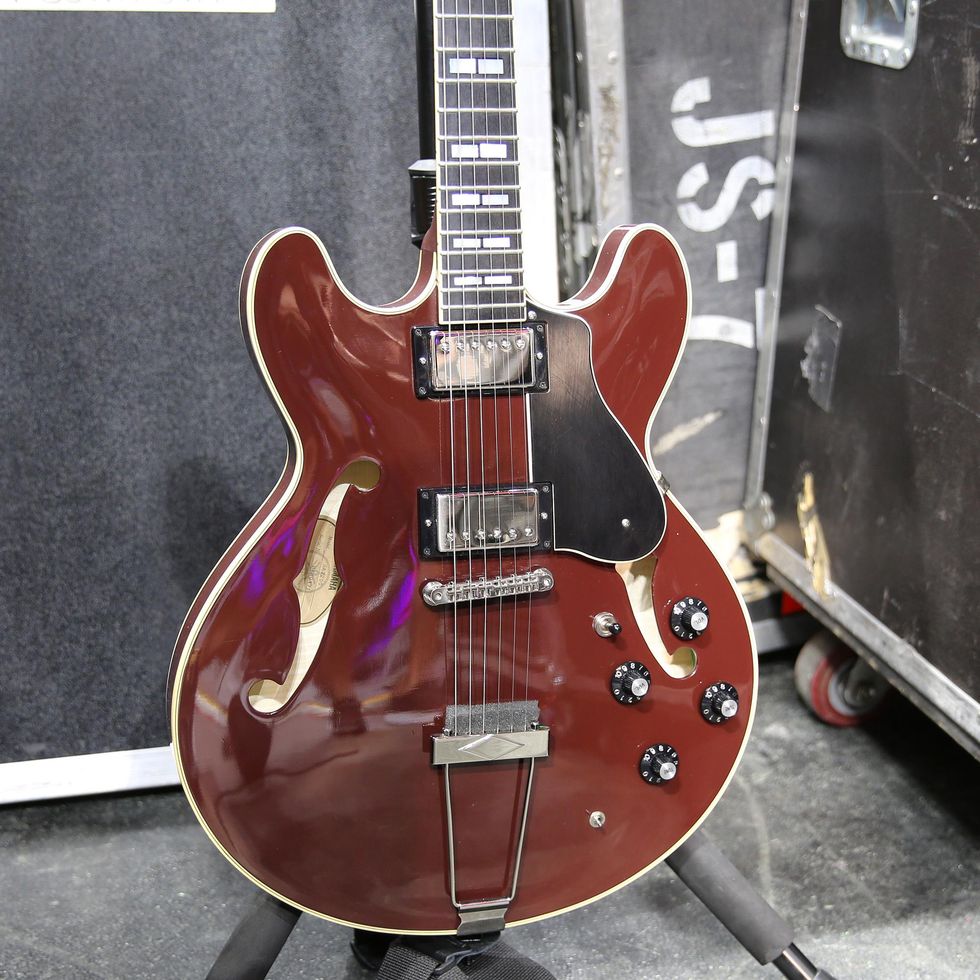
For a semi-hollow, Jeff goes with his Yamaha SA2200 guitars, with Lollar Low Wind Imperial Humbuckers.
Player’s Pick
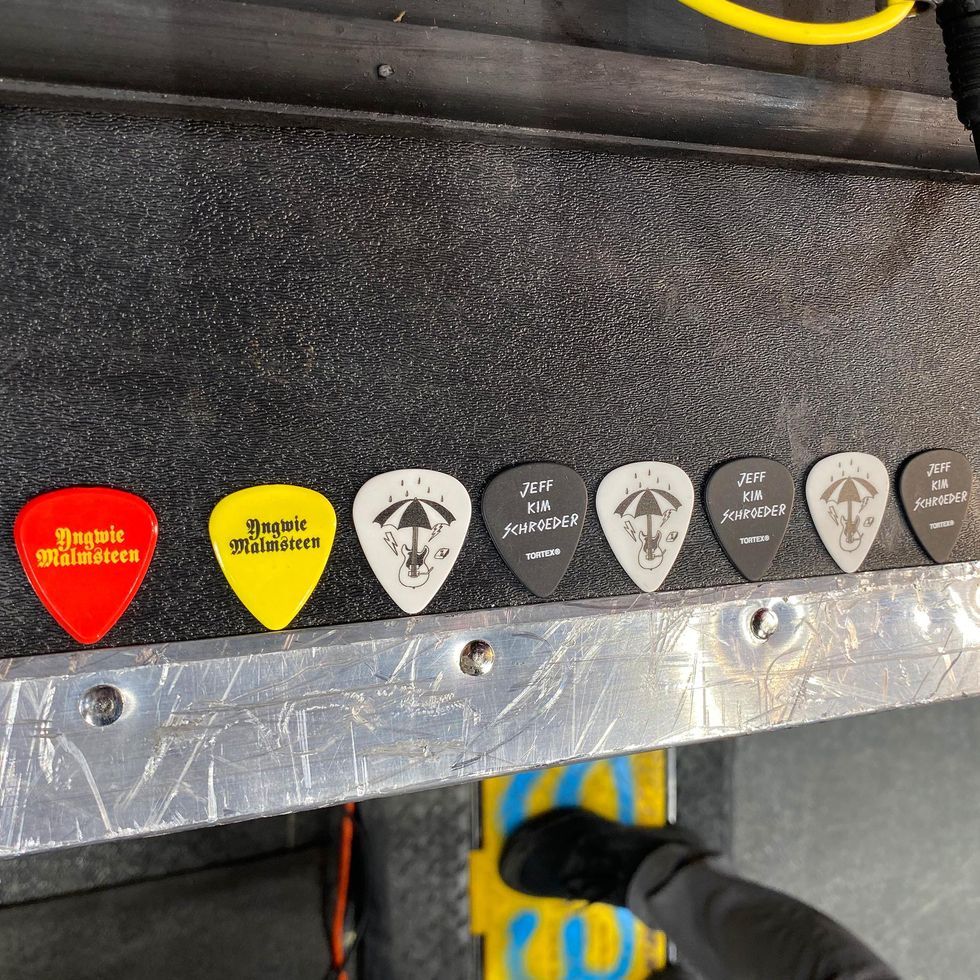
As with all his axes, his plectrum choice is Dunlop Tortex 1.14 mms, including the the just-for-fun Dunlop YJMP03YL Yngwie Malmsteen picks (yellow), but the Dunlop YJMP02RD Yngwie Malmsteen picks (red) are beefier at 2 mm.
Double Generation
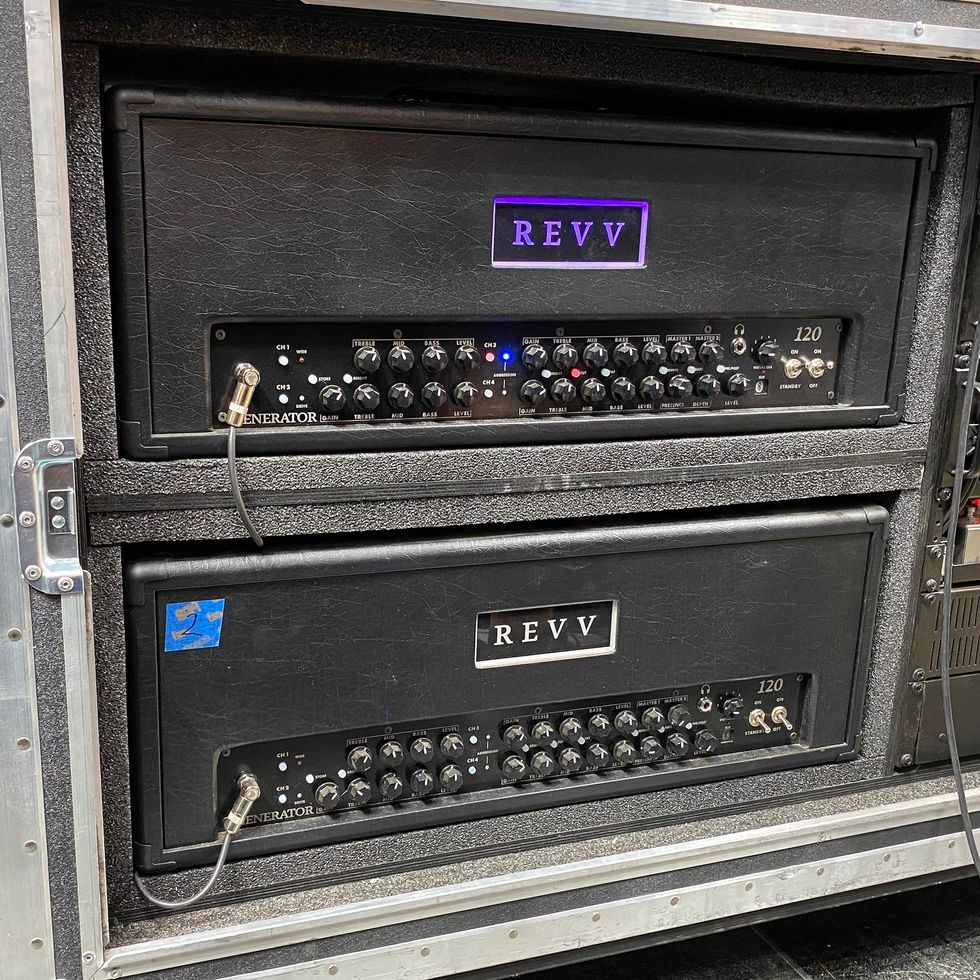
Schroeder tours with two Revv Generator 120 MKII tube heads—big, beefy, and versatile.
Don’t Call a Cab
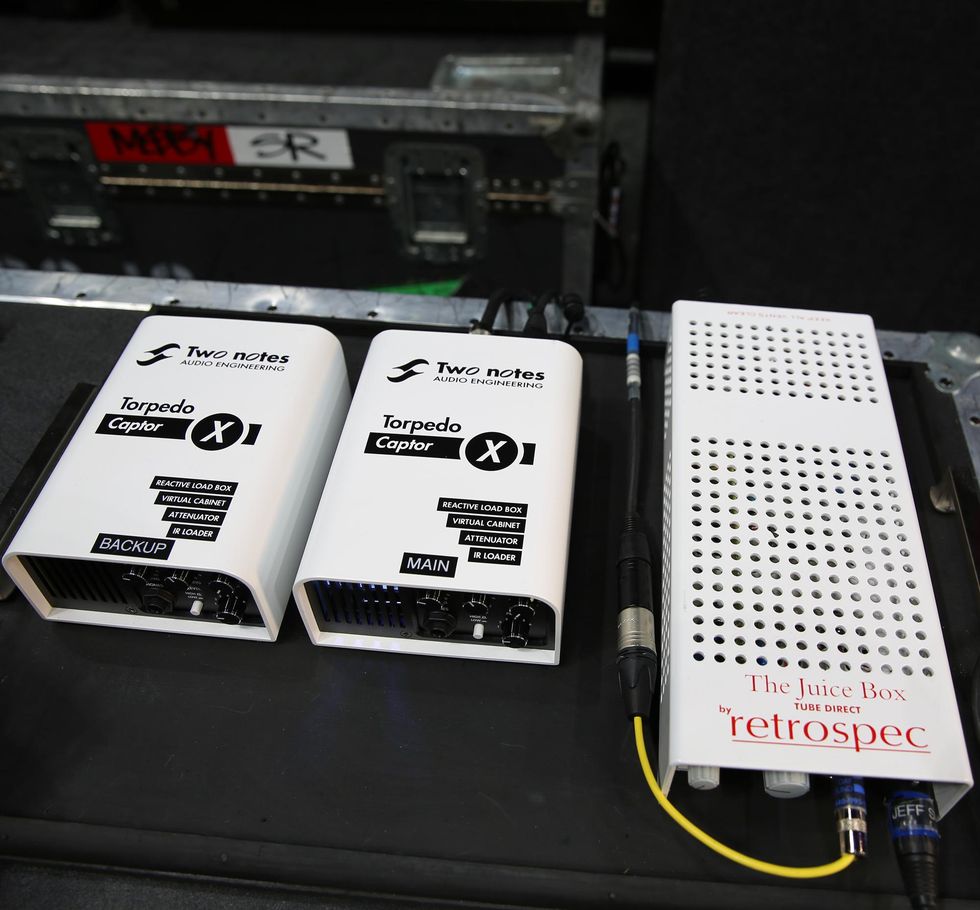
No big boxes for Schroeder … at least onstage. He uses a pair of Two Notes Torpedo Captor X simulators, emulating a 4x12 mic’d with a Shure SM57 and Sennheiser MD421 on Celestion V30s. As a back-up, there is a Marshall 4x12 in an isolation cabinet—with a Shure SM57—under the stage. And Jeff’s “icing on the cake”—a suggested addition from tech Trace Davis (of Voodoo Amps)—is a Retrospec Juice Box. This inconspicuous box is a transformer-less, all-tube DI that has upped his live tones to a studio quality.
Double Helix
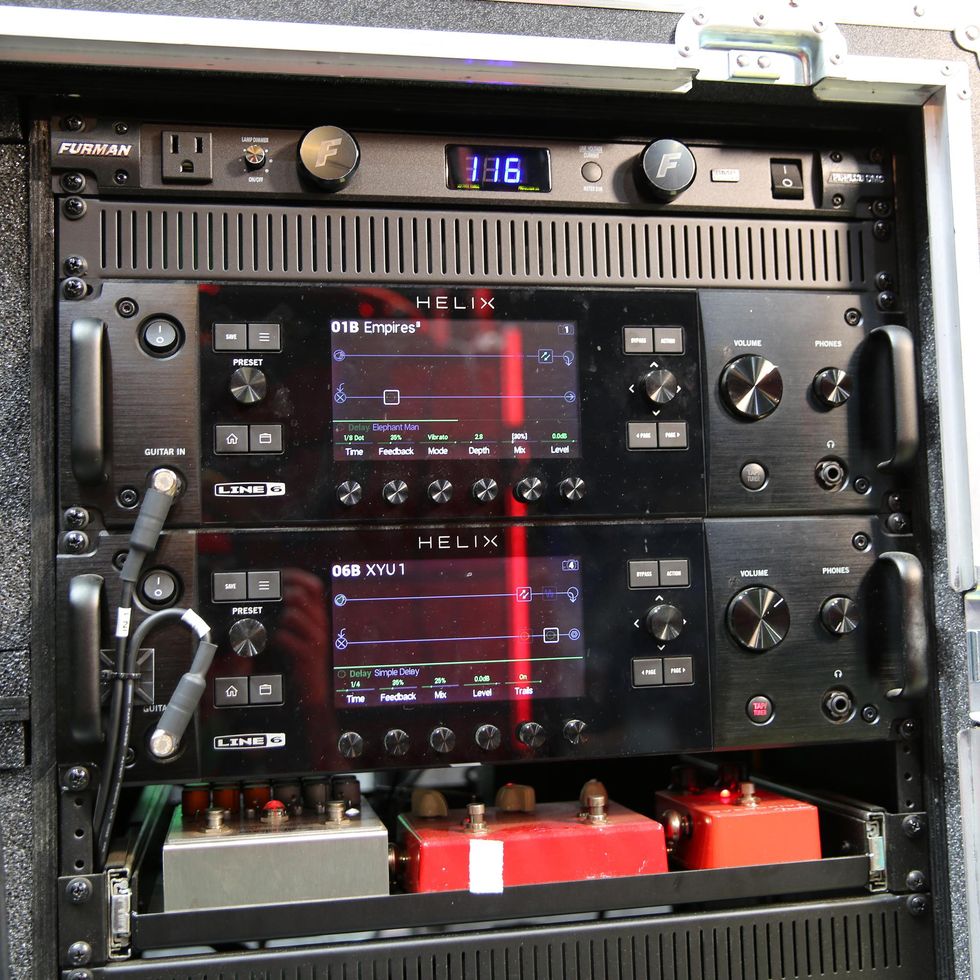
His effects array has two Line 6 Helix Rack units that live in his rolling rock case.
Central Command
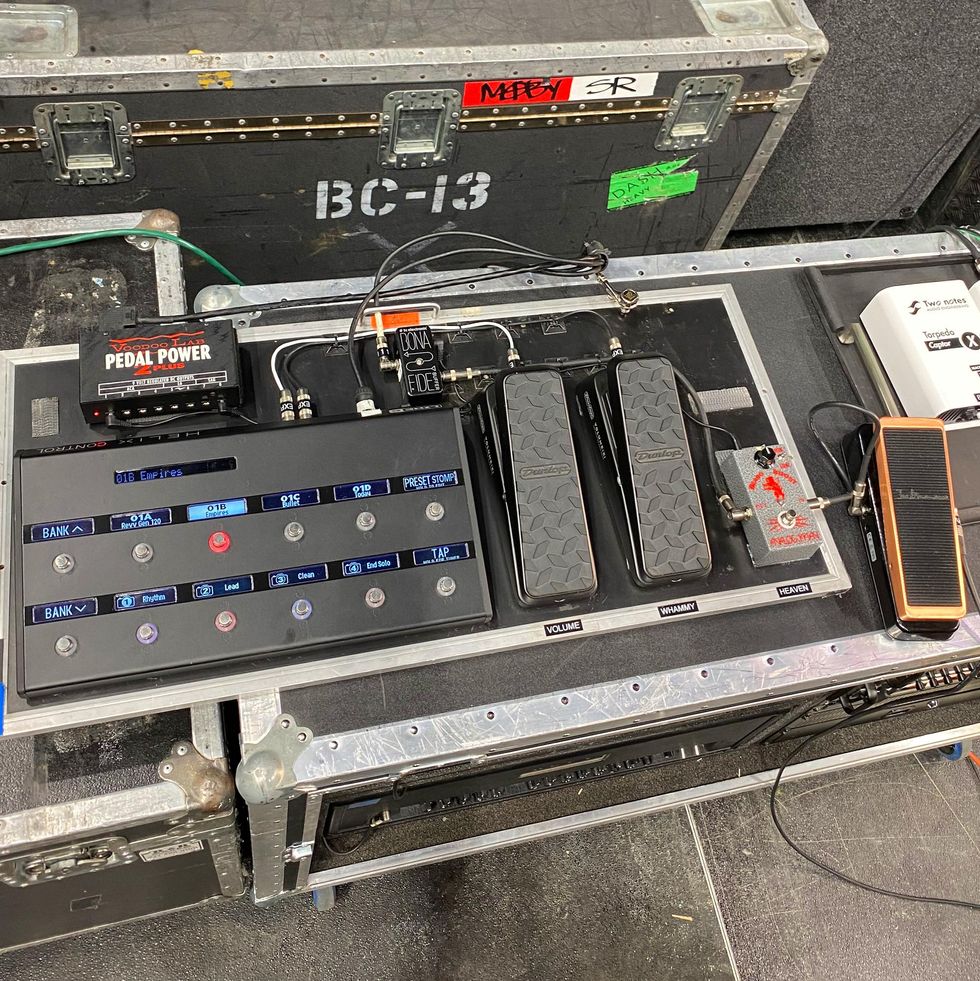
At his feet he has a Line 6 Helix Control Foot Controller that works with an Analog Man Beano Boost, like Billy’s. These are fired up for solos. Also, Schroeder has a pair of Dunlop DVP3 Volume (X) pedals (one for volume and another for pitch-shifting effect from the Helix) and a Dunlop JB95 Joe Bonamassa Signature Cry Baby wah.
But Wait, There’s More
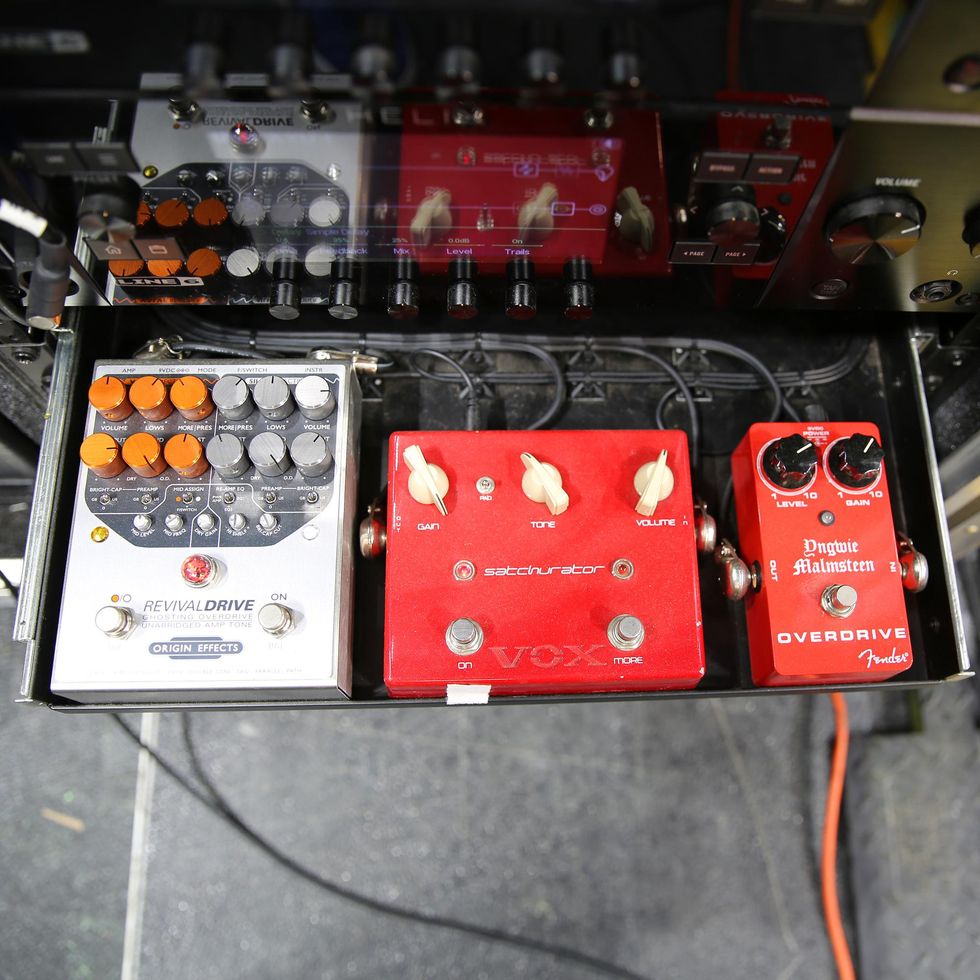
He also uses an Origin Effects RevivalDrive, a Vox Satchurator, and Fender’s Yngwie Malmsteen signature OD.
![Rig Rundown: The Smashing Pumpkins [2022]](https://www.premierguitar.com/media-library/rig-rundown-the-smashing-pumpkins-billy-corgan-jeff-schroeder-2022.jpg?id=32176140&width=1200&height=675)





![Rig Rundown: AFI [2025]](https://www.premierguitar.com/media-library/youtube.jpg?id=62064741&width=1245&height=700&quality=70&coordinates=0%2C0%2C0%2C0)












 Shop Scott's Rig
Shop Scott's Rig













 Zach loves his Sovtek Mig 60 head, which he plays through a cab he built himself at a pipe-organ shop in Denver. Every glue joint is lined with thin leather for maximum air tightness, and it’s stocked with Celestion G12M Greenback speakers.
Zach loves his Sovtek Mig 60 head, which he plays through a cab he built himself at a pipe-organ shop in Denver. Every glue joint is lined with thin leather for maximum air tightness, and it’s stocked with Celestion G12M Greenback speakers.

















![Devon Eisenbarger [Katy Perry] Rig Rundown](https://www.premierguitar.com/media-library/youtube.jpg?id=61774583&width=1245&height=700&quality=70&coordinates=0%2C0%2C0%2C0)













